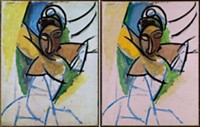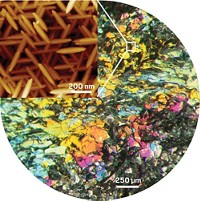Advertisement
Grab your lab coat. Let's get started
Welcome!
Welcome!
Create an account below to get 6 C&EN articles per month, receive newsletters and more - all free.
It seems this is your first time logging in online. Please enter the following information to continue.
As an ACS member you automatically get access to this site. All we need is few more details to create your reading experience.
Not you? Sign in with a different account.
Not you? Sign in with a different account.
ERROR 1
ERROR 1
ERROR 2
ERROR 2
ERROR 2
ERROR 2
ERROR 2
Password and Confirm password must match.
If you have an ACS member number, please enter it here so we can link this account to your membership. (optional)
ERROR 2
ACS values your privacy. By submitting your information, you are gaining access to C&EN and subscribing to our weekly newsletter. We use the information you provide to make your reading experience better, and we will never sell your data to third party members.
Analytical Chemistry
Understanding Oil- Paint Brittleness
by Bethany Halford
September 5, 2011
| A version of this story appeared in
Volume 89, Issue 36
When artists working with oil paints want to add white to their palettes, many turn to paints pigmented with zinc oxide, which is cheaper and less toxic than paints pigmented with lead carbonate. But much to the horror of artists and art conservators, zinc white, unlike lead white, often turns brittle and cracks within just a few years. Stuart G. Croll and Malia Zee of North Dakota State University, working with Marion F. Mecklenburg of the Smithsonian Institution’s Museum Conservation Institute, are trying to understand the physicochemical process that keeps lead white paint tough but makes zinc white paint brittle. “There are huge differences in mechanical properties and solubility between oil paints made with different pigments, which pose problems in art conservation and restoration,” Croll told C&EN. He believes that the key difference lies within the metal soaps that are produced as moisture permeates the paint over time. Some of these soaps, Croll thinks, are liquid-crystalline ionomers—polymers with both neutral and ionic repeating units. In some cases, metals or ions cross-link these polymers, and when there’s an excess of cross-linking, the paint becomes brittle.






Join the conversation
Contact the reporter
Submit a Letter to the Editor for publication
Engage with us on Twitter